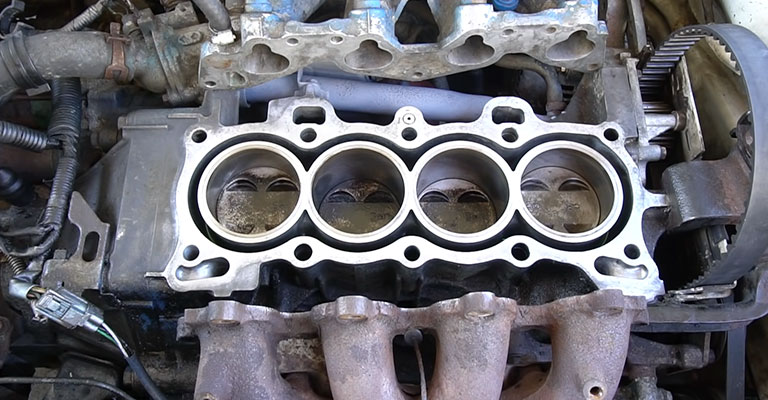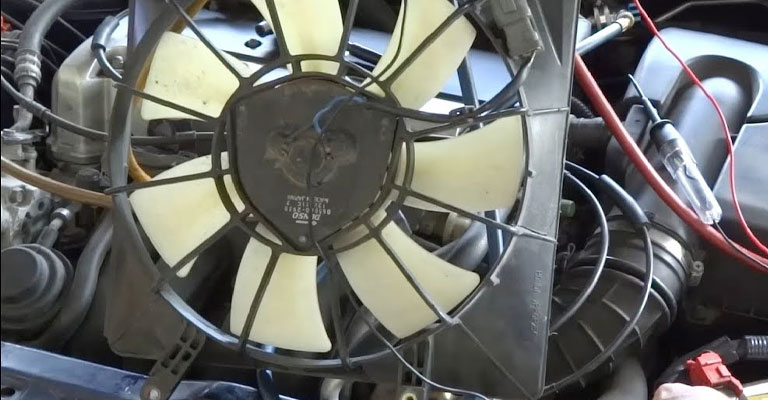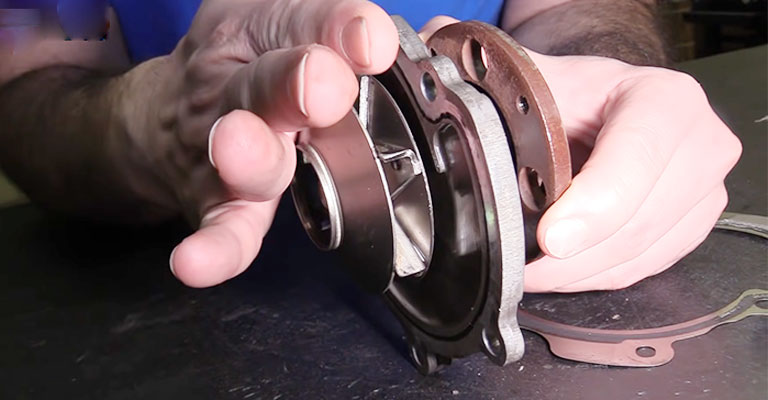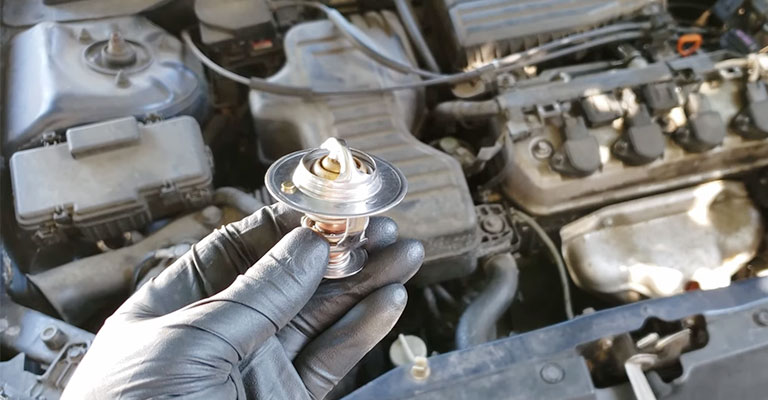The coolant helps to reduce the engine heat so that the performance of the engine remains stable. A coolant reservoir keeps the coolant in place and ensures the proper flow to the vehicle engine. But if you’re still noticing engine overheats, you probably should wonder why your coolant reservoir keeps emptying!
Leaking hose connections and radiators are mainly responsible for emptying the coolant reservoir. Besides, issues with the thermostat, gauge sensors, and other associated parts also affect the reservoir negatively.
This article is all about the causes and fixes of a leaking coolant reservoir that affects the overall vehicle performance.
Besides, some tips and tricks mentioned here will also help you to maintain the coolant reservoir and avoid unwanted situations.
Why Does a Coolant Reservoir Keep Emptying?

Suppose, you noticed your coolant reservoir being empty after every few days even if you are refilling the reservoir properly. In such cases, it is more than necessary to find out the actual reasons why the coolant reservoir is emptying after a certain period.
Otherwise, an empty coolant reservoir might lead to severe damage to other vehicle parts associated with the engine. The most common reasons for an empty coolant reservoir are stated below.
Leaking Hose Connector of the Coolant Reservoir
The coolant hose connectors work as bridges between the engine and the coolant reservoir. Through these hoses, the coolant fluid passes down to the engine for reducing the engine heat.
Often, the vehicle engine overheats to such an extent that the pressure on the connectors increases excessively. As a result, the connectors start bloating and they get leaked after bearing the pressure of the engine.
Besides, the hose connectors might leak because of the loose clamp. If the clamp is too loose, the coolant evaporates on the way to the vehicle engine. So, you may notice the reservoir being empty after a few days of refilling.
Broken Head Gasket

The head gasket is a seal between the engine block and the cylinder head. As we have discussed before, loose clamps often cause leaks in the hose connectors. A broken or damaged head gasket might be a strong reason for making the clamp lose.
When the coolant flows to the combustion chamber of the vehicle engine, the head gasket seals the chamber to prevent the evaporation of the coolant.
Sometimes, you may notice your coolant reservoir empty but not leak. Such a situation might occur due to a broken head gasket as the coolant leaks from the point where the gasket is damaged. Besides, the coolant and the engine oil might get mixed together because of a blown head gasket.
Damaged Cooling Fans

Generally, cooling fans are located between the radiator and the vehicle engine ensuring necessary airflow to the engine. These fans affect the heat exchange process of the radiator so that the radiator doesn’t get overheated.
In case, the cooling fans fail to reduce the heat of the coolant; heat builds up inside them that might get back to the engine. It causes leaks in the coolant reservoir and the hose connectors.
So, if you notice the coolant reservoir empty overheating the engine and causing leaks in the coolant reservoir, a damaged cooling fan might be the criminal behind it.
Faulty Seal of the Water Pump

The water pump of a vehicle maintains the continuous flow of water alongside the coolant to the engine so that the engine cannot get overheated. It also ensures that the coolant circulates through the entire cooling system.
A sealing system regulates the flow of coolant between the radiator and the water pump. The seal might get rusted or damaged because of using it for a long time. It affects the flow of water to the engine.
If the seal of the water pump is faulty or gets damaged somehow, it can leak. As a result, the coolant might drop outside the connecting hose, and eventually, the coolant level drops down to the optimum level in the reservoir.
Broken Radiator
A broken radiator or a hole in the radiator surface might be the worst situation you can think of for your vehicle. Any defect in the radiator can cause severe damage to the engine and other associated parts along with the coolant reservoir.
If you notice smoke flowing out of the radiator; surely, there is a hole in the radiator surface or the radiator itself got broken somehow.
Often, the radiator gets corrosive which can lead to wear and tear of the radiator wiring system along with creating holes on the surface. In such a case, the reservoir can get empty in a short time because of the leak in the radiator.
Malfunction with the Thermostat

Generally, the thermostat maintains the optimum temperature of the vehicle engine and also regulates the entire cooling system. Any malfunction in the thermostat can lead to the failure of the entire cooling system.
The thermostat keeps track of the engine temperature and sends signals to the cooling system. After receiving the signal, the cooling system allows the coolant to flow from the reservoir to the engine.
If there is any malfunction in the thermostat, the cooling system generates the wrong signal. As a result, a large quantity of coolant might flow through the hose, and eventually, the reservoir gets empty.
Why Do We Need Coolant in the Reservoir?
Generally, the main job of a coolant reservoir is to store the coolant fluid which is necessary to maintain the heat of the vehicle engine. You will find the coolant reservoir near the radiator attached to the coolant hose connectors.
Coolant is essential for your vehicle engine to deal with overheating issues. If the engine overheats, several problems may arise that can cost heavily to your vehicle.
The engine might shut down and other vehicle parts associated with the engine might fail due to overheating. Besides, the wiring system along with the spark plug wires and connectors might get damaged also. In such a situation, the control module of the vehicle can also act unusually, causing mild to severe accidents.
Often people think of using water to deal with the overheating issue of the engine. But water is not so effective to cool down the engine as it doesn’t contain good thermal characteristics. As a result, it takes a lot of time to reduce the engine temperature by using water.
Besides, a coolant reservoir is designed in such a way that the coolant can’t freeze up like water in low temperatures. So, the coolant works efficiently to maintain the engine temperature even in freezing temperatures.
The coolant fluid consists of several chemicals but nowadays, ethylene glycol is mostly used as a coolant. While adding coolant to the coolant reservoir, you should always maintain the proper concentration of the fluid as it often varies with different models of vehicles.
Mechanism of the Cooling System
The main components of the cooling system include coolant fluid, reservoir, coolant hose connectors, water pump, radiator, cooling fans, and thermostat. These components work with the help of the coolant fluid, airflow, and water to reduce the heat of the vehicle engine.
Basically, the cooling system works on the coolant by circulating it inside and outside of the vehicle engine. This system starts working when you initiate the engine through your starter.
But the coolant won’t start circulating at the start of your engine as it doesn’t rise to the optimum temperature by then.
When the temperature of the engine rises, the thermostat allows the coolant to flow through the engine and the radiator. Then, the temperature is passed down to the coolant and the coolant temperature rises up.
The coolant cools down by the air that flows in and out of the engine by the radiator. After the coolant cools down, again it goes into the engine through the piping system and this circulation goes on until the engine stops.
A coolant reservoir maintains the proper coolant level and sends the information signal to the cooling system. As the reservoir can detect the maximum and minimum level of the coolant; the cooling system identifies it through the signal and the check engine light flashes as an indicator of the coolant level.
How to Fix Issues of the Coolant Reservoir?
After that you have detected the actual reason behind your empty coolant reservoir, it is necessary to fix it as soon as possible. Otherwise, it can cause excessive heating of the vehicle engine along with damaging the associated components.
Here we are discussing some quick fixes regarding the issues of the coolant reservoir. This can help you out in critical situations when you are unable to find any professional mechanic around to deal with these issues.
Replacing the Radiator Cap
If you find the radiator cap of your vehicle is broken or damaged by rust, you should replace it as soon as possible. Otherwise, you may notice the coolant level is going down and the reservoir is getting empty too soon.
Repairing the Leaks in the Hose Connectors
As leaking hose connectors are the most common cause of empty reservoirs, you should check the connectors more often. If you notice any leaks, repair them without any delay. In case there are several leaks in the connectors, it is better to replace them.
Sealing the Water Pump Properly
When the coolant temperature rises, the seal in the water pump regulates the flow of water to the engine. Remember to seal it properly every time you fill-up the pump. Replace the seal if it becomes rusty and damaged.
Flushing the Cooling System
As the cooling system takes care of the engine properties, sometimes it is necessary to flush and reset the system. You should flush it in case the system works unusually or shows error codes in the OBD2 scanner.
Maintaining the Proper Coolant Level
Check the coolant reservoir once a week to maintain the proper amount of coolant. If the coolant level is low, refill it to the optimum level and replace the coolant fluid if it is dirty and dark in color.
Patching Up the Radiator Holes
If you notice any holes in the radiator surface, you should patch them up without any delay. Because a faulty radiator can become the worst nightmare of any vehicle owner. In case you notice multiple holes, replacing the entire radiator will be a better option.
Fixing the Defects of the Thermostat
Inspecting the thermostat should be included in your regular maintenance schedule as it affects the flow of the coolant. Any defect in the thermostat could cause excessive flow of the coolant making the reservoir empty.
Check if the thermostat is opening and closing properly or not. Otherwise, replace it with the help of a professional.
Frequently Asked Questions
- How to detect a leak in the coolant reservoir?
Check if there are any stains of the coolant around the engine compartment. Notice the clamps that seal the hose connector to the coolant reservoir. These coolant stains indicate leakage of the reservoir. Besides, you can also detect a leak if you notice smoke coming from the radiator or engine.
- What are the signs of a bad radiator?
Constant overheating of the vehicle engine is the most common symptom of a bad radiator. Besides, you can also detect a faulty radiator by noticing the leakage of the coolant. A bad radiator often increases pressure on the hose connectors and makes them bloated.
- Can you use water for reducing the engine temperature?
Water can sometimes reduce the engine temperature but it doesn’t work efficiently to prevent overheating of the engine. Besides, water can freeze in low temperatures and can’t absorb heat. You may use water on the engine for emergency situations but it is not suitable for an effective result.
Final Words
An empty coolant reservoir is a sign that questions the overall engine performance of your vehicle. You should not ignore any malfunction associated with the coolant fluid as it prevents the engine from overheating and also protects from temperature fluctuations.
So, if you were finding it difficult to detect why my coolant reservoir keeps emptying; hopefully, this article has cleared all your confusion regarding this. Additionally, you can also follow the quick fixes mentioned above to deal with an empty coolant reservoir in your vehicle.
Leave a Reply